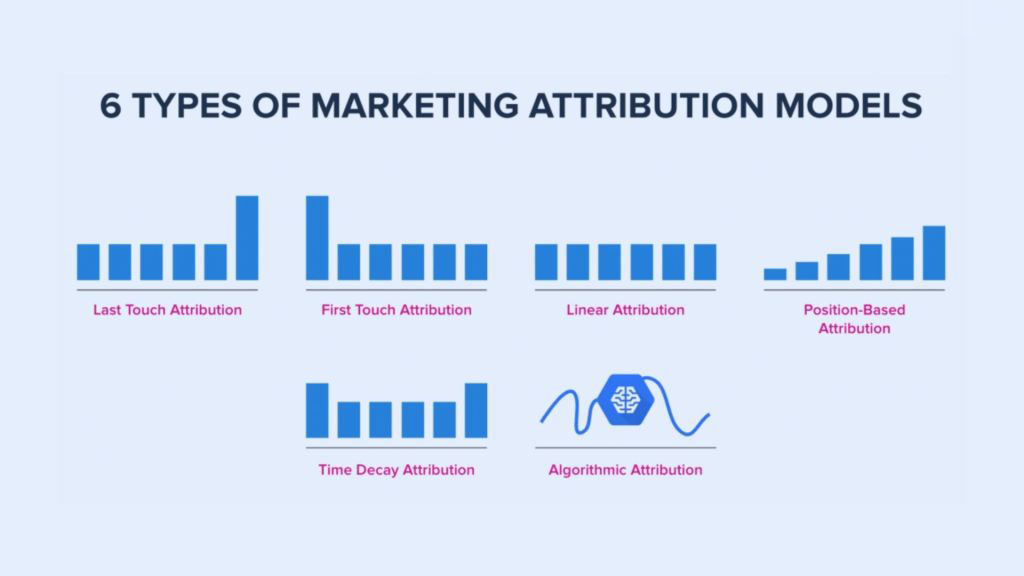Imagine a busy restaurant kitchen. Chefs collaborate to produce a masterpiece. One chef sears the protein, another prepares the vegetables, while another makes the beautiful sauce. Which input gets the most significant credit for the final masterpiece? Marketing attribution is similar. Your digital marketing efforts are like chefs, each helping potential customers convert, sell, or sign up. With so many touchpoints along the customer journey (website visits, social media interactions, email clicks, etc.), how do you credit the marketing channels that drove that conversion? Here comes marketing attribution.
What is Marketing Attribution?
Marketing attribution is assigning credit to the various marketing touchpoints a customer interacts with on their journey to conversion. It assists you in determining which campaigns and marketing channels are most successful in producing the intended outcomes, enabling you to maximize your marketing expenditure and tactics for increased return on investment.
Think of it as piecing together a puzzle. Each marketing touchpoint represents a piece of the puzzle, and by understanding how each piece contributes to the overall picture, you can gain valuable insights into your customer behavior.
Why is Marketing Attribution Important?
In today’s data-driven marketing landscape , attribution is no longer a luxury – it’s a necessity. Here’s why:
- Optimize Marketing Spend: Imagine pouring money into a marketing campaign without measuring its effectiveness. You may focus on high-performing channels and use your cash more wisely by using attribution to determine which channels bring in the most conversions.
- Identify Hidden Gems: Sometimes, unassuming channels can be surprisingly effective. Attribution can reveal hidden gems within your marketing mix, channels that might quietly drive conversions but go unnoticed without proper attribution.
- Improve Customer Journey Understanding: The customer journey is rarely linear. Understanding how different touchpoints influence conversion gives you a deeper understanding of your customer’s decision-making process. With this knowledge, you may design marketing efforts that are more individualized and targeted.

- Fuel Content Marketing Strategies: You can use attribution to determine the content that connects most with your audience. You may alter your strategy based on the content pieces that convert well.
- Prove ROI: Marketing attribution allows you to demonstrate the actual value of your marketing efforts. By quantifying the impact of each channel, you can present data-driven reports to stakeholders and secure further investment in your marketing initiatives.
Different Marketing Attribution Models
There’s no one-size-fits-all approach to marketing attribution. Different models assign credit to touchpoints in various ways. Here are some of the most common models:
- Last Touch Attribution: This model assigns all credit for the conversion to the previous touchpoint the customer interacted with before converting. While simple, it can undervalue the role of earlier touchpoints that introduced the customer to your brand.
- First Touch Attribution: A consumer’s initial point of contact with a business receives all the credit under this paradigm. These could have taken place at a later stage of the client’s journey.
- Linear Attri needs to be considered: This model distributes credit equally among all touchpoints a customer interacts with before converting. It provides a basic overview of channel performance but needs to account for the varying influence of different touchpoints.
- Time Decay Attribution: In recognition of the fact that more recent contacts are probably going to have a more significant influence, this model gives touchpoints that are closer to the conversion greater weight.
- Position-Based Attribution: This model splits credit between the first and last touchpoints, with a smaller share distributed among touchpoints. It recognizes the importance of initial awareness and a final nudge toward conversion.
- U-shaped Attribution: This model assigns the most credit to the first touchpoint (brand awareness) and the last touchpoint (conversion), with a smaller share distributed among touchpoints in the middle. It acknowledges the significance of initial brand awareness and the final push towards conversion.

- Custom Attribution Models: Additionally, you can design unique models that evaluate various touchpoints according to your customer journey and business objectives.
Choosing the Right Marketing Attribution Model
The best marketing attribution model for your business depends on your specific goals and customer journey. Here are some factors to consider when choosing a model:
- Your Business Goals: Are you focused on driving immediate sales or building long-term brand awareness? This will influence which touchpoints you value most.
- Customer Journey Length: While a more straightforward journey might work well with a last-touch attribution model, a complex customer journey with multiple touchpoints might benefit from a model that considers the influence of various touchpoints, such as time-decay or U-shaped attribution.
- Data Availability: Some attribution models require more sophisticated data collection and analysis capabilities. Select a model that works with the data infrastructure you currently have.
Benefits of Implementing Marketing Attribution
By implementing a marketing attribution model, you can expect to reap several benefits:
- Data-Driven Marketing Decisions: Move beyond guesswork and base your marketing decisions on concrete data. By helping you determine what is and is not adequate, attribution enables you to maximize the impact of your initiatives.
- Improved Marketing ROI: By allocating resources to high-performing channels, you can maximize the return on your marketing investment.
- Enhanced Customer Experience: Understanding your customer journey allows you to tailor your marketing efforts better to meet their needs and expectations at each touchpoint.
- More substantial Marketing Alignment: Marketing attribution fosters better collaboration between marketing teams. Different teams can create a more cohesive and effective marketing strategy by sharing data and insights.

Unlock the Power of Marketing Attribution
Marketing attribution is a powerful tool that empowers you to understand the true impact of your marketing efforts. By assigning credit to the various touchpoints influencing customer conversions, you can optimize your marketing budget, improve customer journey understanding, and ultimately achieve your marketing goals.
Ready to unlock the power of marketing attribution for your business? Discover how OCH can help you obtain insightful knowledge about your customer journey and maximize the effectiveness of your marketing activities by exploring our marketing attribution solutions. OCH is a creative digital marketing agency specializing in helping businesses leverage the power of data-driven marketing strategies. We offer a comprehensive suite of marketing attribution services, from model selection and implementation to data analysis and reporting. Let OCH be your guide to a more data-driven and successful marketing future.



